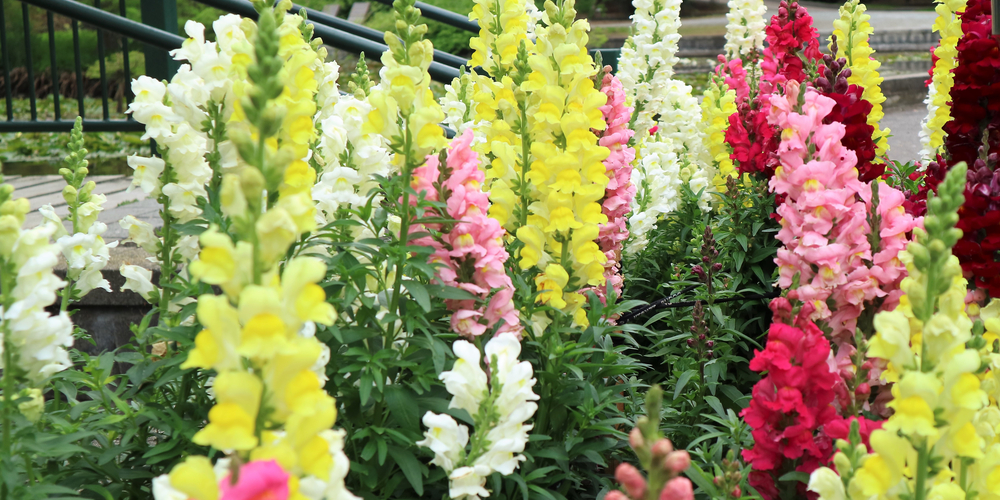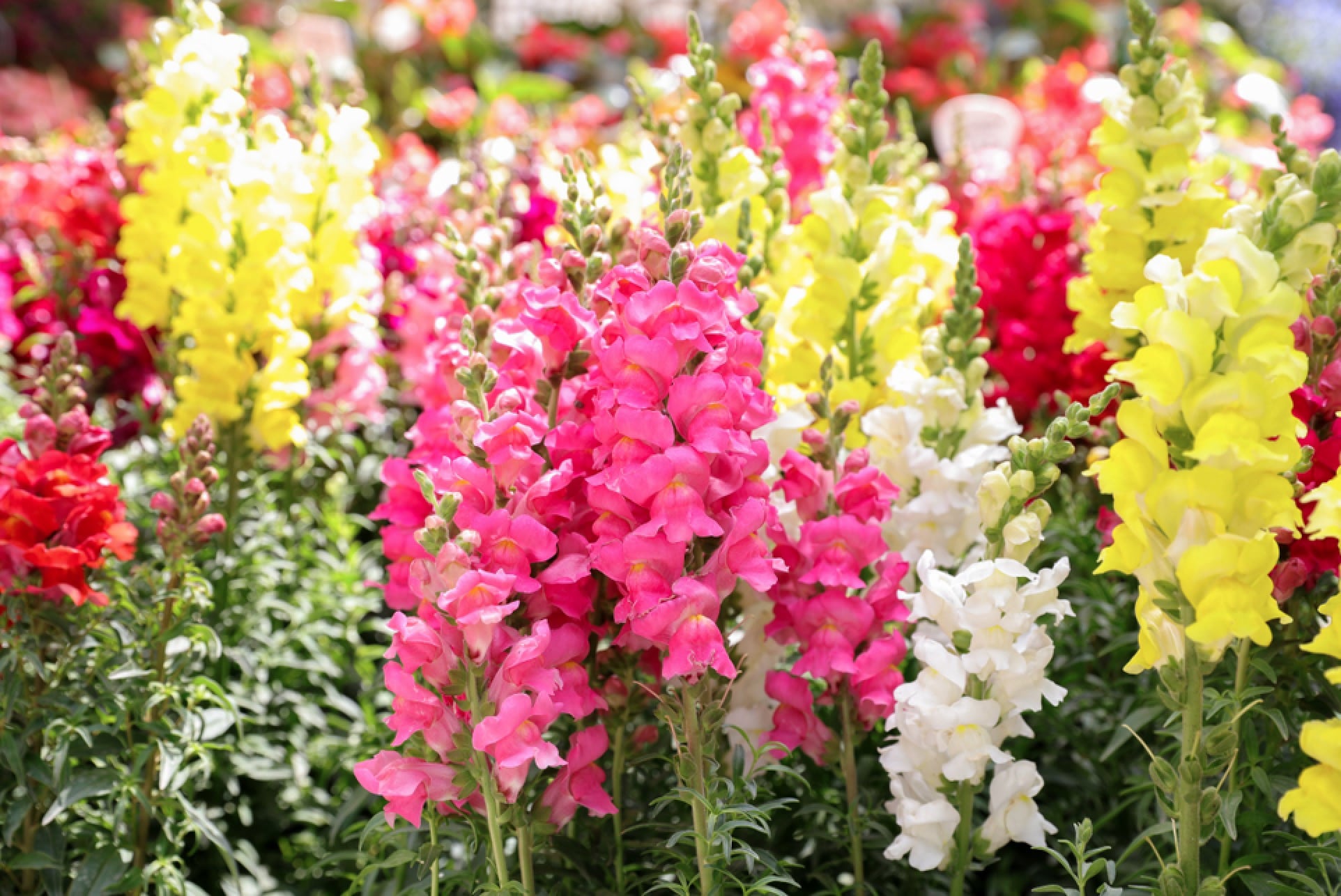| Question | When to Plant Snapdragons? |
|---|---|
| Answer | Seeds: Indoors before last frost in cool climates, outdoors in fall in warm climates. Seedlings: In spring or fall depending on climate. |
| More Info |
|

Snapdragons (Antirrhinum majus) can be planted at different times based on your climate zone and whether you start with seeds or young plants.
- Seeds: In cooler climates (USDA Zones 7 and below), start snapdragon seeds indoors 6-8 weeks before the last expected frost. Then, transplant them outdoors after the danger of frost has passed, usually in early spring. In warmer climates (USDA Zones 8 and above), seeds can be sown directly outdoors in fall for winter or early spring blooms.
- Young Plants or Seedlings: Plant these outdoors in spring after the risk of frost has passed in cooler areas. In warmer regions, plant them in fall for winter or early spring flowering.
Snapdragons prefer full sun to partial shade and well-drained soil. They’re known for their tolerance to cool temperatures and can bloom in cooler weather, making them excellent for extending the garden’s color in spring and fall.
Snapdragons: 101
Snapdragons, members of the genus Antirrhinum, are beloved for their vibrant, dragon-shaped flowers that add a whimsical touch to gardens.
Gardeners appreciate the diverse color range, excluding true blue, and the vertical interest snapdragons bring to flower beds.
Characteristics:
- Scientific Name: Antirrhinum majus
- Growth Habit: Upright, vertical
- Height: Typically ranges from 6 inches to 3 feet
- Bloom Time: Bountiful blooms from spring to fall
- Sun Exposure: Prefer full sun to partial shade
Planting Preferences:
| Temperature | Soil Conditions | Water Requirements |
|---|---|---|
| Cool | Well-draining | Evenly moist, 1 inch per week |
Snapdragons thrive in the cooler temperatures of early spring and fall.
They start to struggle under the intense heat of summer, so planting them after the risk of frost has passed in spring or before the onset of a hard freeze in fall ensures they have time to establish.
These flowers prefer a well-draining soil medium, as excessive moisture can lead to root rot.
During their growth period, maintaining an evenly moist soil is key, with a general recommendation of about one inch of water weekly to sustain healthy growth.
Propagation:
Snapdragons can be grown from seeds, seedlings, or stem cuttings.
Propagating from cuttings involves taking a 2-inch piece of stem from a healthy plant, removing the lower leaves, and using rooting hormone to encourage development.
Categorized as annuals or tender perennials, snapdragons can persist through milder winters in USDA Zones 8-9. They bring an old-fashioned charm and a long season of color to any garden array.
Optimal Planting Time
Choosing the right time to plant snapdragons is crucial for healthy growth and vibrant blooms.
Gardeners need to consider both seasonal timing and climate conditions to ensure the best results for these charming flowers.
By Season
Spring: Snapdragons thrive in cool temperatures and can be planted in early spring as soon as the soil is workable.
They are often planted after the danger of frost has passed, as frost can damage the seedlings. An ideal guideline is to plant snapdragons about eight weeks before the expected last frost date.
- Fall: In some regions, planting snapdragons in the fall allows them to establish roots and flourish early the next spring. They can survive mild winters and will bloom profusely when temperatures rise.
By Climate
- Cooler Climates: Snapdragons prefer the milder conditions found in cooler climates. They can be planted in the spring or fall when temperatures consistently remain below 70°F (21°C).
- Warmer Climates: In areas with hot summers, it is particularly important to plant snapdragons where they will receive morning sun and afternoon shade to protect them from the heat. Make sure the soil has good drainage to prevent root rot.
Planting Preparation
Preparing to plant snapdragons involves understanding their specific soil needs and the importance of sunlight and spacing for optimal growth.
Soil Requirements
Snapdragons thrive in well-draining soil enriched with organic matter.
Gardeners should aim for a soil pH between 6.0 and 7.5.
Testing the soil pH in advance is crucial, as it allows one to amend the soil with lime to raise the pH or sulfur to lower it, if necessary. Here’s a quick guide:
- pH level: Ideal range between 6.0 and 7.5.
- Soil Type: Loamy, well-draining soil.
- Organic Matter: Incorporate compost or other organic material to improve soil quality.
Sunlight and Spacing
Snapdragons require a sunny location to flourish.
They should be planted where they will receive full sun for most of the day to ensure strong and healthy growth.
Careful consideration of spacing is also important to prevent overcrowding and promote air circulation, which helps reduce the risk of fungal diseases. Below are the sunlight and spacing requirements:
- Sunlight: Full sun is best, meaning at least 6 hours of direct sunlight per day.
- Spacing: Plant snapdragons 6 to 8 inches apart.
Planting Process
The planting process for snapdragons involves two critical steps: starting seeds indoors and then transplanting the seedlings to an outdoor setting.
Sowing Seeds Indoors
The initial step in cultivating snapdragons begins with starting the seeds indoors.
Gardeners should plant seeds in a tray or container with well-draining potting soil approximately eight weeks before the last expected spring frost. The optimal germination of snapdragon seeds occurs when they are provided with:
- Seed Depth: A very light covering of soil, as snapdragon seeds need light to germinate.
- Temperature: Maintain a consistent temperature of around 65-75°F (18-24°C).
- Sunlight: Place the container in an area where it can receive ample sunlight or use a grow light.
Transplanting Outdoors
Once the seedlings have developed a few sets of true leaves and are strong enough to handle the outdoors, it’s time for transplanting. Gardeners should:
- Prepare the planting site by ensuring the soil is workable and well-draining.
- Loosen the roots gently if the seedlings are pot-bound.
- Dig a hole that is 1.5 times the size of the root ball of the seedling.
- Soil Level: Carefully place the seedling in the hole, keeping the soil level even with the surrounding ground.
- Backfill: Backfill the soil around the seedling and lightly press to remove air pockets.
Ongoing Care and Maintenance
Once snapdragons are established, they require regular care to maintain their vibrant blooms and ensure a healthy growth cycle.
Watering: Snapdragons prefer evenly moist soil. They should be watered regularly, especially during dry spells, but gardeners must avoid waterlogging, which can lead to root rot.
- Tip: Allow the soil to dry slightly between waterings for optimal plant health.
Fertilization: A balanced, slow-release fertilizer can support snapdragon growth. Apply it at the beginning of the growing season and possibly again in midsummer, according to package instructions.
- Note: Too much fertilizer can decrease flowering and make the plants leggy.
Deadheading: To encourage continuous blooming, spent flowers should be removed periodically. This process, known as deadheading, redirects the plant’s energy from seed production to new growth and flowers.
Staking: Taller varieties of snapdragons may require staking to prevent them from toppling over.
| Activity | Frequency | Notes |
|---|---|---|
| Watering | Regularly | Avoid waterlogging |
| Fertilization | Start of season, possibly midsummer | Follow package instructions |
| Deadheading | As needed | Promote new growth and flowers |
| Staking | As needed | For tall varieties |
Pest and Disease Management: Keep an eye out for common pests such as aphids and rust.
Healthy air circulation and proper spacing can prevent fungal diseases; if problems arise, treat them promptly with appropriate methods.
Frequently Asked Questions
In this section, readers will find targeted advice addressing common inquiries for cultivating snapdragons, from planting the seeds to ensuring a long-lasting display of blooms.
How should snapdragon seeds be planted for successful germination?
Snapdragon seeds require light to germinate, so they should be scattered on soil surface and gently pressed in without covering them with soil. Consistent moisture and temperatures of 65-75°F enhance germination success.
What are the care instructions for growing snapdragons in pots?
When growing snapdragons in pots, they should be planted in well-draining soil and kept in an area with full sun exposure. Containers should provide adequate water drainage to avoid waterlogged roots.
What is the best time to plant snapdragons to ensure a full blooming period?
To maximize bloom time, snapdragons should be planted in early spring or fall, when the weather is cool. They thrive in cooler temperatures, which extend the blooming period.
Can snapdragon plants be expected to self-seed, and if so, under what conditions?
Snapdragons may self-seed if the spent flowers are left to dry on the stem and conditions are favorable. Seeds need to fall on open soil and require light to germinate the following season.
How can I extend the blooming time of my snapdragon plants?
Deadheading, or the removal of spent flowers, encourages snapdragons to produce more blooms. Regular feeding and adequate watering also support prolonged flowering.
Are there specific varieties of snapdragons that are recommended for creating cut flower arrangements?
For cut flower arrangements, tall varieties of snapdragons are recommended due to their long, sturdy stems.
Varieties such as ‘Rocket’ and ‘Madame Butterfly’ are known for their exceptional height and robust blooms.
Last update on 2025-04-21 / Affiliate links / Images from Amazon Product Advertising API



